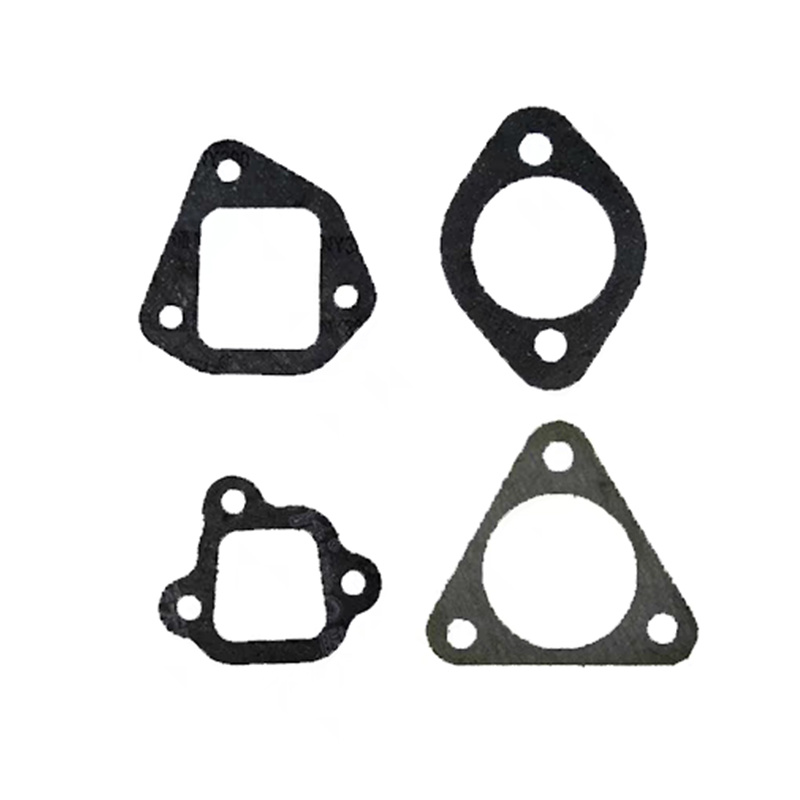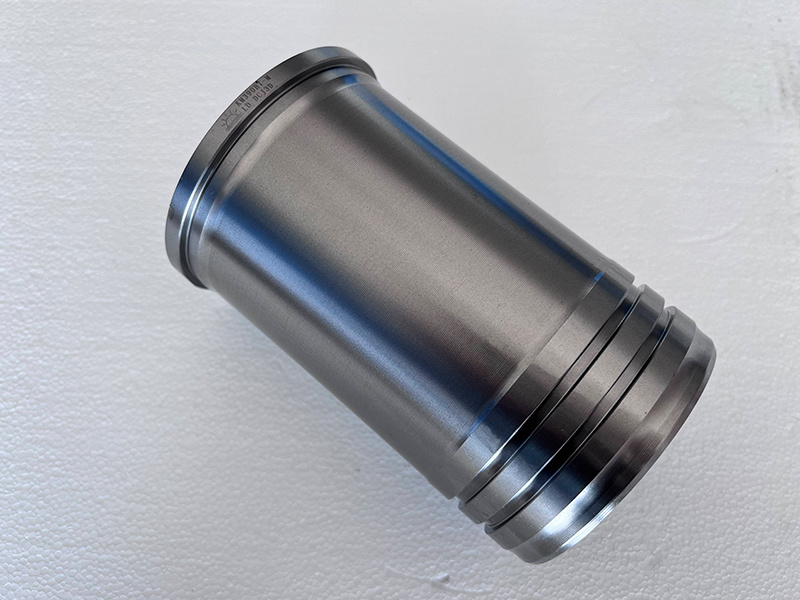How an Air Filter Enhances Air Cushion Performance for Industrial Applications
Oct 10,2025
How an Air Filter Enhances Air Cushion Performance for Industrial Applications
Table of Contents
Introduction to Air Filters and Air Cushions
Understanding Air Cushions in Industrial Settings
The Importance of Air Filters in Industrial Applications
How Air Filters Work to Enhance Air Cushion Performance
Benefits of Using Air Filters with Air Cushions
Common

How an Air Filter Enhances Air Cushion Performance for Industrial Applications
Table of Contents
- Introduction to Air Filters and Air Cushions
- Understanding Air Cushions in Industrial Settings
- The Importance of Air Filters in Industrial Applications
- How Air Filters Work to Enhance Air Cushion Performance
- Benefits of Using Air Filters with Air Cushions
- Common Types of Air Filters for Air Cushions
- Maintaining Air Filters for Optimal Performance
- Real-World Case Studies: Air Filters in Action
- Frequently Asked Questions (FAQs)
- Conclusion
Introduction to Air Filters and Air Cushions
In the realm of industrial equipment, **air cushion systems** have garnered attention for their ability to provide a protective and stable environment for various processes. These systems, designed to use air pressure to create a cushion of air, play a pivotal role in reducing vibrations, shocks, and other mechanical impacts. However, the effectiveness of these air cushions is significantly influenced by the quality of the air passing through them. This is where **air filters** come into play.
Air filters are crucial components that ensure clean air supply, directly impacting the efficiency and longevity of air cushion systems. In this article, we will explore how air filters enhance air cushion performance, the types of filters available, maintenance practices, and real-world case studies that illustrate their effectiveness.
Understanding Air Cushions in Industrial Settings
Air cushions utilize compressed air to create a barrier between equipment and its environment, providing several benefits in industrial applications. These include:
1. Vibration Dampening
Vibration can lead to excessive wear and tear on machinery. Air cushions effectively absorb shock and minimize vibrations, protecting sensitive equipment.
2. Load Distribution
By distributing weight evenly, air cushions help prevent damage to equipment and the surfaces they operate on, prolonging their lifespan.
3. Enhanced Stability
An air cushion creates a more stable environment for processes such as transportation and assembly, reducing the risk of accidents.
The Importance of Air Filters in Industrial Applications
Air filters serve a vital role in maintaining the quality of air that feeds into pneumatic systems, including air cushions. The importance of using air filters can be summarized as follows:
1. Protection Against Contaminants
Dust, dirt, and other particles can compromise the performance of air cushions. Air filters trap these contaminants, ensuring that only clean air enters the system.
2. Improved Performance and Efficiency
Clean air enhances the performance of air cushions, leading to increased efficiency in operations. When air filters are used, the pressure drop across the air cushion is minimized, allowing for optimal performance.
3. Extended Equipment Lifespan
By preventing contaminants from entering the air cushion system, air filters help extend the lifespan of both the air cushions and associated machinery.
How Air Filters Work to Enhance Air Cushion Performance
Air filters function through various mechanisms, including:
1. Mechanical Filtration
This method uses a physical barrier to trap particles. Common mechanical filters include pleated filters and foam filters, effective in removing larger particulates.
2. Electrostatic Filtration
Some air filters use an electrostatic charge to attract and capture smaller particles. This technology can enhance filtration efficiency, ensuring cleaner air for the air cushion system.
3. Chemical Filtration
Chemical filters can remove gases and odors, further improving air quality. While not commonly used in all air cushion applications, they can be beneficial in specific industrial environments.
Benefits of Using Air Filters with Air Cushions
Integrating air filters into air cushion systems offers several advantages:
1. Enhanced Air Quality
With contaminants effectively removed, the air quality in industrial settings improves, leading to a healthier work environment.
2. Cost Savings
By prolonging the lifespan of air cushions and associated equipment, companies can achieve significant cost savings over time. Reduced maintenance and replacement costs contribute to better budget management.
3. Compliance with Regulations
Maintaining air quality can help companies comply with environmental and safety regulations, avoiding potential fines and improving public relations.
Common Types of Air Filters for Air Cushions
Choosing the right type of air filter for air cushions is crucial. Here are some of the most common options:
1. HEPA Filters
High-Efficiency Particulate Air (HEPA) filters can capture at least 99.97% of particles that are 0.3 microns or larger. These are ideal for environments requiring high air quality standards.
2. Activated Carbon Filters
These filters are excellent for removing odors and gaseous pollutants, making them suitable for industrial applications where volatile organic compounds (VOCs) may be present.
3. Panel Filters
Easy to install and maintain, panel filters are often used in various applications to provide a balance between filtration efficiency and airflow.
Maintaining Air Filters for Optimal Performance
To ensure that air filters function effectively, proper maintenance is essential:
1. Regular Inspections
Conduct routine checks to assess the condition of air filters. This includes looking for physical damage, dirt accumulation, or changes in airflow.
2. Scheduled Replacements
Follow manufacturer guidelines for filter replacement intervals. Regularly changing filters helps maintain optimal airflow and filtration efficiency.
3. Cleaning Techniques
Some filters can be cleaned and reused, while others are designed for single use. Utilize appropriate cleaning methods to extend the life of reusable filters without compromising their effectiveness.
Real-World Case Studies: Air Filters in Action
To understand the practical implications of air filters in enhancing air cushion performance, let’s examine a couple of real-world examples:
1. Automotive Manufacturing Facility
In a large automotive manufacturing facility, air filters were integrated into the air cushion systems used for transporting heavy parts. The filters removed dust and debris from the air, resulting in a noticeable reduction in wear on the air cushions and related machinery. Over time, the facility reported a 20% reduction in maintenance costs.
2. Pharmaceutical Production Plant
A pharmaceutical plant implemented high-efficiency HEPA filters in their air cushion systems to ensure the integrity of their products. The clean air environment not only improved the performance of the air cushions but also led to a significant reduction in contamination incidents, enhancing product quality.
Frequently Asked Questions (FAQs)
1. How often should I replace air filters in my air cushion system?
Replacement frequency depends on the specific application and environment. Regular inspections will help determine the appropriate schedule, typically every 3-6 months.
2. Can I use any type of air filter for my air cushion system?
Not all filters are suitable for every application. It’s essential to select filters that meet the specific requirements of your air cushion system.
3. What are the signs that my air filter needs replacing?
Signs include reduced airflow, increased noise from equipment, or visible dirt and damage on the filter.
4. How do air filters impact energy efficiency?
Clean air filters allow for optimal airflow, reducing the workload on air compressors and pneumatic systems, ultimately resulting in improved energy efficiency.
5. Is professional installation necessary for air filters?
While many filters can be installed by facility personnel, professional installation may be beneficial for complex systems to ensure optimal functionality.
Conclusion
The synergy between **air filters** and **air cushion systems** is undeniable. By utilizing high-quality air filters, companies can significantly enhance air cushion performance, leading to improved efficiency, cost savings, and extended equipment lifespan. Regular maintenance and proper selection of filters further contribute to optimal functionality. As industries continue to prioritize efficiency and sustainability, understanding the role of air filters in air cushion systems becomes essential for maintaining competitive advantage. Implementing air filters not only safeguards equipment but also fosters a cleaner, safer industrial environment.
TAG:
Recent News
Mastering Agricultural Machinery: A Deep Dive into Engine Speed Control Shaft Mechanics
Mastering Agricultural Machinery: Understanding Engine Speed Control Shaft
Table of Contents
1. Introduction to Engine Speed Control Shaft in Agricultural Machinery
2. Importance of Engine Speed Control Shaft in Agricultural Machinery
3. How Engine Speed Control Shaft Works
4. Types of Engine Speed Control Shafts
4.1. Mechanical Control Shafts
4.2. Electronic Control Shafts
5. Common Issues with E


